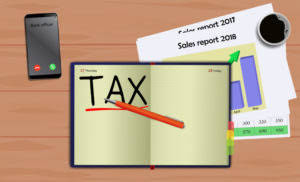
A public company can convert its equity into several small units called shares. Equity is important because it represents the value of an investor’s stake in a company, represented by the proportion of its shares. Owning stock in a company gives shareholders the potential for capital gains and dividends.
How Do You Calculate Shareholders’ Equity?

Therefore, comparing D/E ratios across different industries should be done with caution, as what is normal in one sector may not be in another. Understanding these distinctions is crucial for accurately interpreting a company’s financial obligations and overall leverage. The value of stocks can fluctuate, and you could potentially lose money. It’s important to do your research and understand your risk tolerance before investing.
Stockholders’ Equity and Paid-in Capital
- Owning equity will also give shareholders the right to vote on corporate actions and elections for the board of directors.
- This is an account on a company’s balance sheet that consists of the cumulative amount of retained earnings, contributed capital, and occasionally other comprehensive income.
- Market value of equity can be compared to other valuations like book value and enterprise value.
- When the balance sheet is not available, the shareholder’s equity can be calculated by summarizing the total amount of all assets and subtracting the total amount of all liabilities.
- Investors looking to calculate market value of equity can find the total number of shares outstanding by looking to the equity section of a company’s balance sheet.
A corporation would be insolvent if its shareholders’ equity turned negative. The statement gives shareholders an overview of the company’s performance. It is also utilized formula for equity by third parties like lenders who want to know if the business is performing its debt obligations and maintaining minimum equity levels. In accounting for share-related transactions, a few more phrases are crucial. The number of shares authorized is the total number of shares that the corporation may issue under the articles of incorporation of the business.

What is the Debt-to-Equity Ratio?
Home equity is roughly comparable to the value contained in homeownership. The amount of equity one has in their residence represents how much of the home they own outright by subtracting from the mortgage debt owed. Equity on a property or home stems from payments made against a mortgage, including a down payment and increases in property value. As part of Apple’s 2023 report, the company listed $62.146 billion of shareholder equity.


Next, the “Retained Earnings” are the accumulated net profits (i.e. the “bottom line”) that the company holds onto as opposed to paying dividends to shareholders. Otherwise, an alternative approach to calculating shareholders’ equity is to add up the following line items, which we’ll explain in more detail soon. Shareholders’ equity is the residual claims on the company’s assets belonging to the https://www.facebook.com/BooksTimeInc/ company’s owners once all liabilities have been paid down. In finance, equity is typically expressed as a market value, which may be materially higher or lower than the book value.
- Learn about the Waste Book, why it’s the oldest book in accounting and how it’s still relevant today.
- A company can pay for something by either taking out debt (i.e. liabilities) or paying for it with money they own (i.e. equity).
- Investing in equity ownership is riskier than investing in other financial instruments.
- Venture capitalists (VCs) provide most private equity financing in return for an early minority stake.
- The shareholders’ equity is the remaining amount of assets available to shareholders after the debts and other liabilities have been paid.
- When an investor invests in a company’s stake, they become equity shareholders and gain ownership in the firm’s net assets.

Research companies with strong equity to potentially see better returns. Both current assets and non-current assets can be included in total assets. Accounts receivable and inventory are examples of current assets because they can both be converted into cash within a year. The value of capital assets and property, including patents, structures, machinery, and notes receivable, are considered long-term assets. It’s significant to note that certain assets, such as fixed assets, do not have their recorded values increased to reflect rises in market value. Stock repurchases – Companies will often buy back their own stocks to reduce the number of outstanding shares and increase the equity value per share.
- Earlier, we were provided with the beginning of period balance of $500,000.
- Understanding these distinctions is crucial for accurately interpreting a company’s financial obligations and overall leverage.
- But because stockholders’ equity may only be paid out after bondholders’ equity has been paid out, shareholders are worried about both liabilities and equity accounts.
- If a company is private, then it’s much harder to determine its market value.
- It also highlights how this figure can play an important role in determining whether or not a company has enough capital to meet its financial obligations.
If we rearrange the balance sheet equation, we’re left with the shareholders’ equity formula. Since equity accounts for https://www.bookstime.com/ total assets and total liabilities, cash and cash equivalents would only represent a small piece of a company’s financial picture. Companies fund their capital purchases with equity and borrowed capital.

